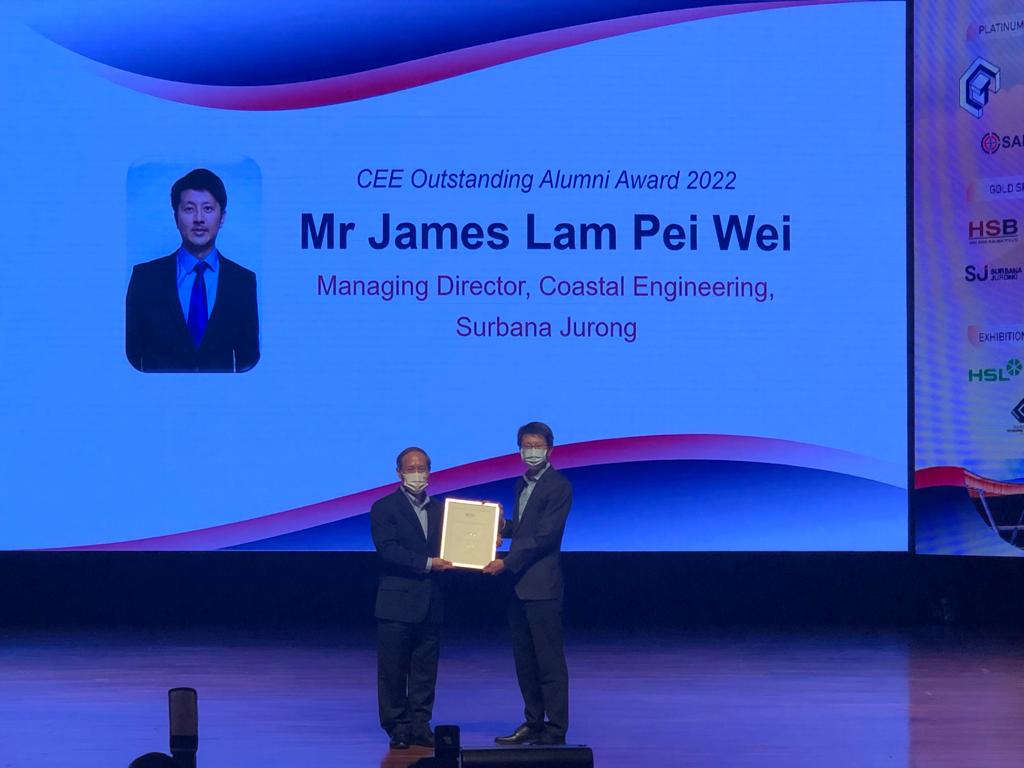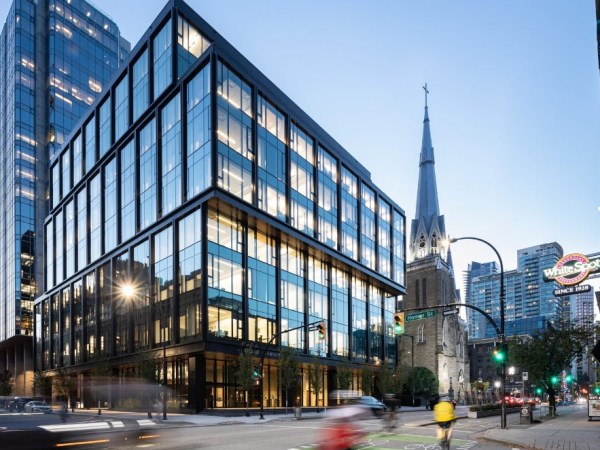(Above) Mr. Lam, Managing Director of Coastal Engineering with his team at a recent coastal clean-up. He is on the extreme right. (Below) Mr. Lam received the Nanyang Technological University’s School of Civil and Environmental Engineering (CEE) Outstanding Alumni Award from Prof Chu Jian, Chair, CEE.

Mr. James Lam, Surbana Jurong’s Managing Director for Coastal Engineering has been recognised for his contributions to developing Singapore’s urban spaces and his key role in coastal and infrastructure projects.
Last week, Mr. Lam received the Nanyang Technological University’s School of Civil and Environmental Engineering (CEE) Outstanding Alumni Award for his efforts in land reclamation.
Mr. Lam has been with SJ for 16 years and has led the Coastal Engineering team for the last seven years. Before him, veteran engineers Mr. Loh Yan Hui (SJ CEO Global Aviation) and Mr. Seah Kim Huah (Deputy CEO Infrastructure) had successfully mentored and built up the team.
Sun, sea, and surf
Mr. Lam aspired to work as a coastal engineer since university. His interest in coastlands was sparked in part by his love for water sports including windsurfing, wakeboarding, jet-skiing, and diving as a student.
Projects that the award-winning engineer has worked on include reclamation on Pulau Tekong, Pasir Panjang Terminal Phases 3 & 4, and the ongoing Tuas Port project that will the largest fully automated port in the world 20 years from now; as well as the reclamation of 172ha of new land at Jurong Island for industrial use. He is also leading a team to protect Singapore’s north-western coast. The team was appointed by the national water agency PUB earlier this year.
SJ’s Coastal Engineering has some 320 staff members, carrying out planning and design, as well as project management and site supervision works. The team is now handling over 10 projects, including key projects such as Tuas Port Phase 2, Polder Development, Climate Change Adaptation Studies, and overseas with SJ Group member company, SMEC.
The growing complexity of engineering
Observing that coastal engineering has evolved over the years, he said, “Initially Singapore used to flatten hills on the island to use the earth for reclamation, and when that source was depleted, sand was used as reclamation fill material. Now we are using excavated soils, recycled construction materials from MRT projects, and marine dredging work to reduce our reliance on the use of sand for reclaiming land.”
In addition, for every project, the team has to conduct environmental impact assessments (EIA) and use Environmental Management and Monitoring Programme to minimise harmful effects to the environment.”
More diversified skill sets are in demand in coastal engineering. The SJ team now includes specialists in environmental engineering, ecology, geographic information system, and hydrodynamic modelling to address the challenges of climate change and a small but important innovation team implementing digital transformation for the site supervision work.
“Our projects are very large-scale and have a transformative effect on Singapore,” Mr. Lam said, “Our team finds this work life-changing and fulfilling and this energises them. As we reclaim more areas, we must also be aware of the future impact this has.”





















